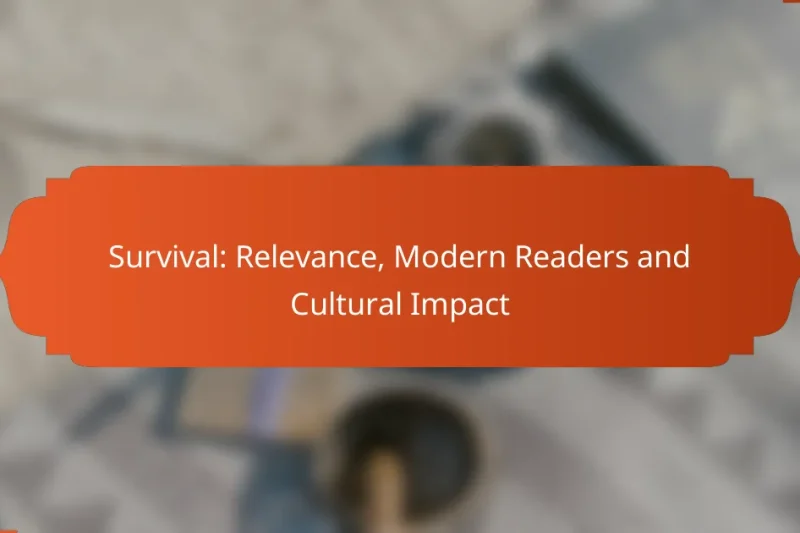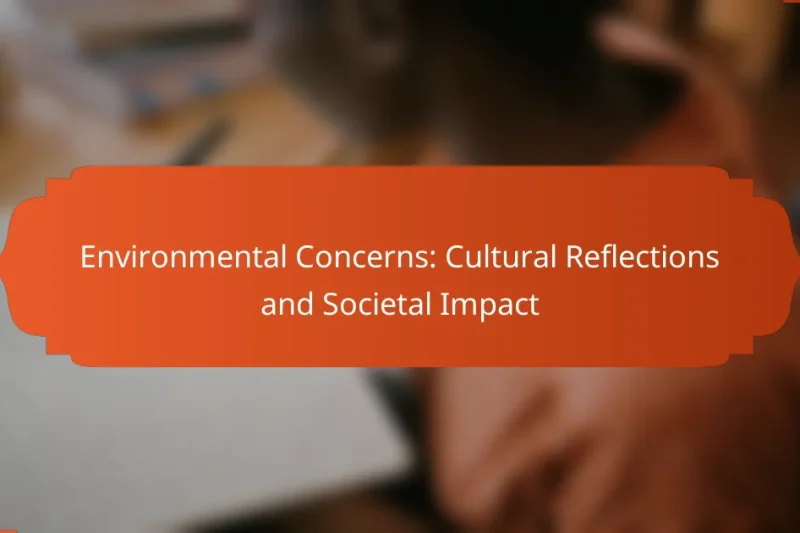In 2025, the landscape of literary works will be profoundly influenced by cultural shifts, technological innovations, … 2025: Influence on Literary Works and TimelineRead more
The year 2025 is poised to bring transformative changes to the e-commerce landscape, driven by technological advancements and shifting consumer preferences. As businesses navigate challenges such as supply chain disruptions and data privacy regulations, understanding these dynamics will be essential for maintaining competitiveness. Additionally, the growing emphasis on sustainability and localism will reshape consumer behavior, necessitating a strategic response from companies to meet evolving expectations.
2025: Literary Legacy and Historical Significance
The literary landscape of 2025 is marked by a rich tapestry of genres, including novels, poetry, … 2025: Literary Legacy and Historical SignificanceRead more
2025: Reader Reactions, Surveys and Studies
In 2025, reader reactions indicate a transformative shift towards interactive and personalized content, emphasizing the importance … 2025: Reader Reactions, Surveys and StudiesRead more
Character Arcs: Lessons, Development and Techniques for Writers
Character arcs are essential to storytelling, adding depth and transformation that make characters’ journeys both compelling … Character Arcs: Lessons, Development and Techniques for WritersRead more
Diverse Characters: Representation, Impact and Reader Connection
Diverse character representation plays a crucial role in literature by enriching narratives and allowing readers to … Diverse Characters: Representation, Impact and Reader ConnectionRead more
2025: Comparison with Modern Dystopian Novels
The year 2025 serves as a compelling lens through which to examine the themes prevalent in … 2025: Comparison with Modern Dystopian NovelsRead more
Descriptive Language: Emotion, Imagery and Reader Connection
Descriptive language plays a crucial role in forging emotional connections in writing, as it crafts vivid … Descriptive Language: Emotion, Imagery and Reader ConnectionRead more
2025: Social Movements and Cultural Impact
In 2025, social movements are playing a pivotal role in shaping cultural dynamics by raising awareness … 2025: Social Movements and Cultural ImpactRead more
Survival: Relevance, Modern Readers and Cultural Impact
Survival is a topic of growing importance for modern readers, as it equips individuals with essential … Survival: Relevance, Modern Readers and Cultural ImpactRead more
Environmental Concerns: Cultural Reflections and Societal Impact
Environmental concerns are deeply intertwined with cultural reflections and societal impacts, shaping how communities engage with … Environmental Concerns: Cultural Reflections and Societal ImpactRead more
How will 2025 impact e-commerce trends?
In 2025, e-commerce trends will be significantly shaped by advancements in technology, consumer preferences, and sustainability efforts. Businesses will need to adapt to these changes to remain competitive and meet evolving customer expectations.
Increased personalization through AI
By 2025, artificial intelligence will play a crucial role in enhancing personalization in e-commerce. Retailers will leverage AI algorithms to analyze customer data, allowing them to tailor product recommendations, marketing messages, and shopping experiences to individual preferences.
For example, AI-driven platforms can track browsing behavior and purchase history to suggest items that align with a customer's unique tastes. This level of personalization can lead to higher conversion rates and improved customer loyalty.
Expansion of omnichannel retail strategies
The shift towards omnichannel retail strategies will accelerate in 2025, as consumers increasingly expect seamless shopping experiences across multiple platforms. Retailers will integrate their online and offline channels to provide a cohesive experience, allowing customers to switch between them effortlessly.
For instance, a customer might browse products online, purchase them through a mobile app, and choose to pick them up in-store. This approach not only enhances convenience but also allows retailers to gather valuable data across channels to refine their strategies.
Growth of sustainable shopping practices
As awareness of environmental issues continues to rise, sustainable shopping practices will gain traction in 2025. Consumers will prioritize eco-friendly products and brands that demonstrate a commitment to sustainability, influencing purchasing decisions.
Retailers can respond by adopting sustainable sourcing, reducing packaging waste, and offering transparent information about their supply chains. For example, brands that use recycled materials or support fair trade practices may attract a growing segment of environmentally conscious shoppers.
What are the key challenges for e-commerce in 2025?
In 2025, e-commerce will face several key challenges, including supply chain disruptions, data privacy regulations, and intense market competition. Addressing these issues effectively will be crucial for businesses aiming to thrive in a rapidly evolving digital landscape.
Supply chain disruptions
Supply chain disruptions will continue to be a significant challenge for e-commerce in 2025. Factors such as geopolitical tensions, natural disasters, and global pandemics can lead to delays and increased costs. Companies need to develop robust contingency plans and diversify their suppliers to mitigate these risks.
Implementing technology solutions like real-time tracking and inventory management systems can enhance visibility and responsiveness. Businesses should consider local sourcing options to reduce dependency on international supply chains, which can be more vulnerable to disruptions.
Data privacy regulations
Data privacy regulations are becoming increasingly stringent, impacting how e-commerce businesses collect and manage customer information. Compliance with laws such as the General Data Protection Regulation (GDPR) in Europe and the California Consumer Privacy Act (CCPA) in the U.S. is essential to avoid hefty fines and maintain customer trust.
Companies should invest in secure data management practices and transparent privacy policies. Regular audits and employee training on data handling can help ensure compliance and protect sensitive customer data from breaches.
Intense market competition
The e-commerce landscape in 2025 will be marked by intense market competition, with both established players and new entrants vying for consumer attention. Businesses must differentiate themselves through unique value propositions, exceptional customer service, and innovative marketing strategies.
Leveraging data analytics to understand customer preferences and behaviors can provide a competitive edge. Additionally, focusing on niche markets or offering personalized shopping experiences can help smaller businesses stand out in a crowded marketplace.
How will consumer behavior change in 2025?
In 2025, consumer behavior is expected to shift significantly towards digital engagement, sustainability, and localism. These changes will be driven by advancements in technology, heightened awareness of ethical consumption, and a desire for community support.
Shift towards mobile shopping
The trend of mobile shopping will continue to grow, with consumers increasingly using smartphones for their purchases. By 2025, it is anticipated that a substantial portion of online sales will occur through mobile devices, making it essential for businesses to optimize their websites and apps for mobile use.
To adapt, retailers should focus on creating seamless mobile experiences, including fast load times and easy navigation. Offering mobile payment options like digital wallets can also enhance convenience and encourage purchases.
Preference for local products
Consumers are expected to show a stronger preference for local products in 2025, driven by a desire to support local economies and reduce carbon footprints. This shift means that businesses sourcing locally will likely gain a competitive edge.
Brands should highlight their local sourcing practices and the benefits of buying local, such as fresher products and community support. Engaging with local suppliers and emphasizing regional heritage can further strengthen this connection.
Increased demand for ethical brands
As awareness of social and environmental issues grows, consumers will increasingly seek out ethical brands in 2025. This demand encompasses fair labor practices, sustainable sourcing, and transparency in production processes.
To meet this demand, companies should clearly communicate their ethical practices and certifications. Engaging in corporate social responsibility initiatives can also enhance brand loyalty and attract conscientious consumers.
What technologies will shape e-commerce in 2025?
In 2025, e-commerce will be significantly influenced by advancements in augmented reality, blockchain integration, and the use of chatbots for customer service. These technologies will enhance user experience, improve transaction security, and streamline customer interactions.
Advancements in augmented reality
Augmented reality (AR) will revolutionize how consumers interact with products online. By allowing customers to visualize items in their own environment, AR can reduce uncertainty and increase confidence in purchasing decisions. For instance, furniture retailers might enable users to see how a sofa fits in their living room before buying.
Retailers should consider investing in AR applications that are compatible with popular devices. Ensuring a seamless experience across platforms can significantly enhance customer engagement and satisfaction.
Integration of blockchain for transparency
Blockchain technology will play a crucial role in enhancing transparency and security in e-commerce transactions. By providing a decentralized ledger, blockchain can help verify the authenticity of products and track their journey from manufacturer to consumer. This is particularly important in industries like luxury goods and food, where provenance matters.
Businesses should explore blockchain solutions that align with their operational needs. Implementing smart contracts can automate processes and reduce fraud, ultimately building trust with customers.
Use of chatbots for customer service
Chatbots will become increasingly vital for customer service in e-commerce, offering 24/7 support and quick responses to inquiries. These AI-driven tools can handle common questions, process orders, and even provide personalized recommendations based on user behavior. This can lead to improved customer satisfaction and reduced operational costs.
To maximize the effectiveness of chatbots, businesses should ensure they are well-trained and capable of handling a variety of scenarios. Regular updates and monitoring can help maintain their relevance and effectiveness in addressing customer needs.
How can businesses prepare for 2025?
Businesses can prepare for 2025 by adopting proactive strategies that focus on digital transformation, customer experience, and supply chain resilience. These steps will help organizations remain competitive and responsive to changing market dynamics.
Invest in digital marketing strategies
Investing in digital marketing strategies is crucial for businesses aiming to thrive in 2025. This includes leveraging social media, search engine optimization, and targeted advertising to reach a broader audience effectively.
Consider allocating a significant portion of your marketing budget—typically around 20-30%—to digital channels. This investment can enhance brand visibility and drive customer engagement through personalized content and data-driven campaigns.
Enhance website user experience
Enhancing website user experience (UX) is essential for retaining customers and increasing conversions. A user-friendly website should load quickly, be mobile-responsive, and offer intuitive navigation.
Focus on optimizing page load times to under three seconds and ensure that your site is accessible on various devices. Regularly gather user feedback to identify pain points and continuously improve the UX based on real user data.
Adopt flexible supply chain solutions
Adopting flexible supply chain solutions allows businesses to adapt to disruptions and changing consumer demands. This involves diversifying suppliers, utilizing technology for real-time tracking, and implementing just-in-time inventory practices.
Consider using cloud-based supply chain management tools that provide visibility and agility. This can help businesses respond quickly to market changes, reducing costs and improving service levels. Aim for a balance between efficiency and resilience to navigate uncertainties effectively.
What are the emerging trends in e-commerce for 2025?
In 2025, e-commerce is expected to see significant shifts, particularly with the rise of subscription-based models and an increased focus on social commerce. These trends will reshape how consumers interact with brands and make purchases online.
Rise of subscription-based models
Subscription-based models are becoming increasingly popular as they offer consumers convenience and value. Businesses can provide curated products or services on a recurring basis, which fosters customer loyalty and predictable revenue streams.
Examples include meal kit deliveries, streaming services, and beauty boxes. Companies should consider offering flexible subscription plans that allow customers to customize their experience, such as choosing delivery frequency or product selection.
When implementing a subscription model, it’s crucial to ensure a seamless user experience. Avoid common pitfalls like hidden fees or complicated cancellation processes, as these can lead to customer dissatisfaction and churn.
Increased focus on social commerce
Social commerce is rapidly gaining traction as platforms like Instagram and TikTok integrate shopping features directly into their interfaces. This trend allows brands to reach customers where they spend their time, making the shopping experience more engaging and interactive.
To leverage social commerce effectively, brands should create visually appealing content that showcases products in a lifestyle context. Engaging with influencers can also amplify reach and credibility, driving sales through authentic recommendations.
It's important to track metrics such as engagement rates and conversion rates from social platforms to refine strategies. Brands should also stay updated on platform algorithms and advertising options to maximize visibility and sales potential.














